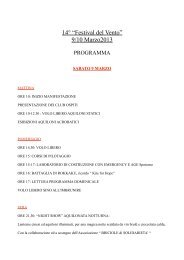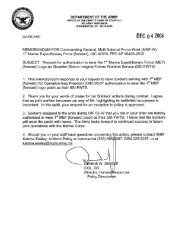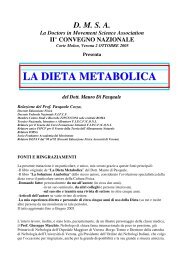Science vs. religion : what scientists really think - File PDF
Science vs. religion : what scientists really think - File PDF
Science vs. religion : what scientists really think - File PDF
You also want an ePaper? Increase the reach of your titles
YUMPU automatically turns print PDFs into web optimized ePapers that Google loves.
196 NOTES TO PAGES 56–59individual. It was actually <strong>scientists</strong>’ self-image of being dedicated to individual inquirythat assured a central group of spiritual entrepreneurs that spirituality was more inline with science and scientific <strong>think</strong>ing than <strong>religion</strong> would be. Sociologists of sciencesuch as Bruno Latour and others would argue neither for individualism nor collectivewisdom but would say that science only <strong>really</strong> changes when new power alliancesand resources are formed that challenge existing structures, meaning that the viewsof individual dissenters are not readily incorporated. See Latour, <strong>Science</strong> in Action . Inparticular, consider Latour’s second principle: “Scientists and engineers speak in thename of new allies that they have shaped and enrolled; representatives among otherrepresentatives, they add these unexpected resources to tip the balance of force in theirfavor” (259).15. Marsden, The Soul of the American University , 6 . See this and Smith, “SecularizingAmerican Higher Education.” And see Ross, The Origins of American Social <strong>Science</strong> ,for more discussion of how American social science has developed.16. Cherry, DeBerg, and Porterfield argue in Religion on Campus that the assertionthat the academy is secularizing does not match the current reality of a resurgence of<strong>religion</strong> and spirituality among undergraduates.17. Charles Taylor, winner of the 2007 Templeton Prize, reflects on the tensionsbetween modernism and postmodernism in the push to secularization, arguing that theworld’s most difficult problems can only be solved through attention to both the secularand the spiritual. See Taylor, A Secular Age . See also Rosenau, Post-Modernism and theSocial <strong>Science</strong>s . It should also be noted that although postmodernism has taken hold inthe social sciences more than in the natural sciences, the social <strong>scientists</strong> at these eliteuniversities were often as much modernists as were the natural <strong>scientists</strong> I studied.18. Bio 12, interview conducted August 19, 2005.19. Sociologists of science, however, would strongly disagree with this view, pointingto the various ways in which science itself is based on systems of belief. See, in particular,Latour, <strong>Science</strong> in Action . See also Lynch and Bogen, “Sociology’s Asociological ‘Core.’”See also Zuckerman, “The Sociology of <strong>Science</strong>,” and Gieryn, “Boundary-Work and theDemarcation of <strong>Science</strong> from Non-<strong>Science</strong>.”20. See Neff, “A New Multidimensional Measure of Spirituality-Religiosity for Usein Diverse Substance Abuse Treatment Populations.”21. These comparisons are significant at the .001 level.22. Bio 9, conducted July 25, 2005.23. See Weber, Sociology of Religion . In addition, see Durkheim, The ElementaryForms of Religious Life , where he discusses the early role of <strong>religion</strong> in society. Chaves,“Secularization as Declining Religious Authority,” and Yamane, “Secularization onTrial,” both discuss modern secularization as decline in religious authority, in the livesof individuals and in societal institutions.24. Statistics comparing the general population are taken from the General SocialSurvey 1998. See Wuthnow and Cadge, “Buddhists and Buddhism in the United States.”Based on data from a nationally representative survey conducted in 2003, Wuthnowand Cadge show that “one person in eight believes Buddhist teachings or practices have
















